Vietnam officially issued the Semiconductor Industry Development Strategy and approved the Semiconductor Industry Human Resource Development Program to 2030, with a vision to 2050. Now is the time to start tapping into the $1 trillion market.
Ambitious roadmap
This is not the first time a seminar on the development of Vietnam's semiconductor industry has been held abroad. However, this time, the "baggage" that Minister of Planning and Investment Nguyen Chi Dung brought to the seminar on Strengthening Vietnam - US cooperation in developing the semiconductor industry and artificial intelligence, held on the afternoon of September 22 (local time) in New York, was the Vietnam Semiconductor Industry Development Strategy and the Semiconductor Industry Human Resource Development Program to 2030, with a vision to 2050.
These two important documents were just signed by the Prime Minister on September 21. “In the coming time, Vietnam will promote the training of high-quality human resources to participate in the AI and semiconductor industries, with the goal of training 50,000 engineers from now until 2030,” said Minister Nguyen Chi Dung.
 |
| Seminar on Strengthening Vietnam - US Cooperation in Developing Semiconductor Industry and Artificial Intelligence |
The roadmap for the development of the semiconductor industry in 3 phases has been outlined in the Strategy. In particular, in phase I (2024-2030), the Government aims to selectively attract foreign investment, establish at least 100 design enterprises, 1 small-scale semiconductor chip manufacturing factory and 10 semiconductor product packaging and testing factories, and develop a number of specialized semiconductor products in a number of industries and fields. The scale of semiconductor industry revenue in this phase in Vietnam will reach over 25 billion USD/year, with added value in Vietnam reaching 10-15%.
“Excited” is the phrase used by a major investor in the semiconductor sector to describe Vietnam’s recent approval of the Semiconductor Industry Development Strategy. “We are very excited that Vietnam has approved the Strategy and look forward to cooperating with Vietnam,” he said.
Meanwhile, Mr. John Neuffer, President and CEO of the Semiconductor Industry Association (SIA), shared that, although he had only glanced at the Strategy on the way to the Seminar venue, he realized that this was a strategy with "great ambition and boldness".
“We welcome Vietnam’s Strategy, and are pleased to see that Vietnam has focused on one of the four important pillars of this industry, which is training human resources for the semiconductor and AI industries. This is one of the very early starts, to prepare for the long journey ahead,” said Mr. John Neuffer, expressing his belief that any country that focuses on developing human resources, goes in the right direction and has the right policies will soon have an important position in the semiconductor industry supply chain.
Last year, Mr. John Neuffer visited Vietnam three times and he recommended that Vietnam should soon have a strategy to develop the semiconductor industry, clearly defining which stages of the industry it will participate in. Now, Vietnam has a Strategy and will focus on the packaging and testing stages in the immediate future.
According to Gartner's forecast, the semiconductor industry will have a revenue of 620 billion USD in 2024 and will increase sharply to 1,000 billion USD in 2030. With the issuance of the Strategy, Vietnam has begun to conquer this 1,000 billion USD market.
“We see great opportunities for Vietnam to play a larger role in our supply chain,” said John Neuffer.
Start conquering the 1,000 billion USD market
In the major goal of the Semiconductor Industry Development Strategy, phase 2 (2030-2040), Vietnam will become one of the global centers of the semiconductor and electronics industry; develop the semiconductor and electronics industry combining self-reliance and foreign investment. And phase 3 (2040-2050), it will become a country among the world's leading countries in the semiconductor and electronics industry; master R&D in the field of semiconductors and electronics.
Not to mention the longer-term goals, there is a lot to do by 2030 alone. In addition to training 50,000 workers for this industry, the goal of developing 100 design enterprises, 1 small-scale semiconductor chip manufacturing plant and 10 semiconductor product packaging and testing factories is also a big challenge.
“Vietnam has gathered many necessary factors and conditions to be able to cooperate and welcome US investors in the fields of semiconductors and AI,” Minister Nguyen Chi Dung said at the Dialogue.
Thanks to this readiness, many enterprises have built semiconductor factories and research facilities in Vietnam. Intel, Amkor, Hana Mircon, Marvell, Synopsys… are typical examples. And this is one of the 7 advantages in developing Vietnam’s semiconductor industry, mentioned by Minister Nguyen Chi Dung, including a stable political system, high-quality human resources, favorable policies and institutions, and determination to develop the semiconductor industry…
In which: C - semiconductor chip; S - Specialized (specialized, specialized chip); E - electronics (electronics, electronics industry); T - talent (talent, human resources); and “+ 1” is “Vietnam is a safe new destination for the global supply chain of the semiconductor industry”.
In addition to foreign investors, recently, some large Vietnamese technology corporations have also been actively participating in the fields of semiconductors and AI. FPT is an example. This corporation has cooperated with a series of big names in the world such as NIVIDIA, Landing AI, Mila..., and plans to invest 200 million USD to develop AI Factory with NVIDIA. Not only establishing a semiconductor company FPT Semiconductor, FPT also participates in training human resources in this field.
“The global semiconductor and AI industry is witnessing a strong change in all fields, opening up unprecedented opportunities for Vietnam. FPT wishes to accompany global information technology and semiconductor organizations and enterprises to invest, cooperate, and together engage in the global semiconductor chain, creating new miracles,” said Mr. Nguyen Van Khoa, General Director of FPT Corporation.
However, according to Mr. John Neuffer, competition in the semiconductor and AI industries is fierce. Therefore, to attract investment, Mr. John Neuffer believes that Vietnam must have great determination and strong action.
Sharing that 6 weeks ago he read a report on the factors that companies often consider when deciding to invest in a country, Mr. John Neuffer said that Vietnam also needs to study this report to integrate it into the Strategy implementation process.
One of the important factors mentioned by Mr. John Neuffer is policies to facilitate the movement of experts, customs clearance procedures, as well as the development of the semiconductor industry ecosystem and the legal framework for the industry's development.
“We also encourage Vietnam to focus more on the R&D sector,” said Mr. John Neuffer, adding that Vietnam should also consider joining the Information Technology Agreement (ITA 2) of the World Trade Organization (WTO), which includes a framework for semiconductor technology management, which many countries in the region such as Singapore, Malaysia, and Thailand have joined.
“By joining this agreement, Vietnam will have many advantages in tariffs for semiconductor products, and therefore, will increase its competitiveness to attract investment,” Mr. John Neuffer affirmed.
Meanwhile, Mr. Keith Strier, Senior Vice President of AMD, said that there are four important factors for developing the semiconductor and AI industries: people, ecosystem, infrastructure, institutions and policies.
“A self-reliant economy needs the development and companionship of AI, aiming for inclusive, effective and transparent use of AI. We will accompany Vietnam to make that a reality,” Mr. Keith Strier emphasized.
There is a wave of investors looking for investment opportunities to diversify the semiconductor industry's supply. Vietnam can benefit from that large wave of investment, but clearly, it will take a great effort to realize its ambition.
Source: https://baodautu.vn/bat-dau-khai-pha-thi-truong-cong-nghiep-ban-dan-1000-ty-usd-d225717.html


![[Photo] The parade took to the streets, walking among the arms of tens of thousands of people.](https://vphoto.vietnam.vn/thumb/1200x675/vietnam/resource/IMAGE/2025/4/30/180ec64521094c87bdb5a983ff1a30a4)

![[Photo] Cultural, sports and media bloc at the 50th Anniversary of Southern Liberation and National Reunification Day](https://vphoto.vietnam.vn/thumb/1200x675/vietnam/resource/IMAGE/2025/4/30/8a22f876e8d24890be2ae3d88c9b201c)

![[Photo] Chinese, Lao, and Cambodian troops participate in the parade to celebrate the 50th anniversary of the Liberation of the South and National Reunification Day](https://vphoto.vietnam.vn/thumb/1200x675/vietnam/resource/IMAGE/2025/4/30/30d2204b414549cfb5dc784544a72dee)





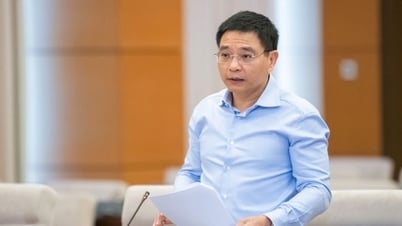







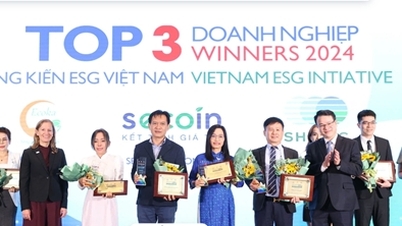
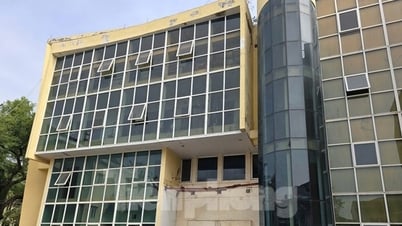


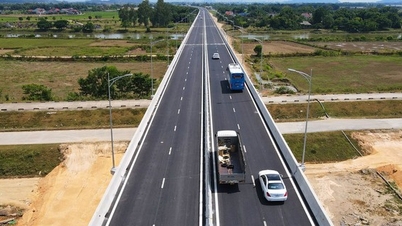






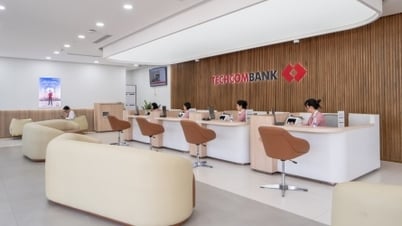
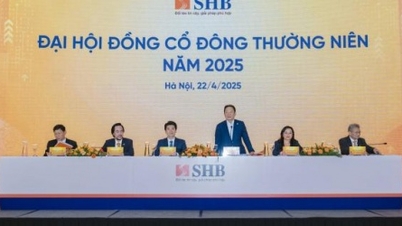


![[Photo] Performance of the Air Force Squadron at the 50th Anniversary of the Liberation of the South and National Reunification Day](https://vphoto.vietnam.vn/thumb/1200x675/vietnam/resource/IMAGE/2025/4/30/cb781ed625fc4774bb82982d31bead1e)



































































Comment (0)